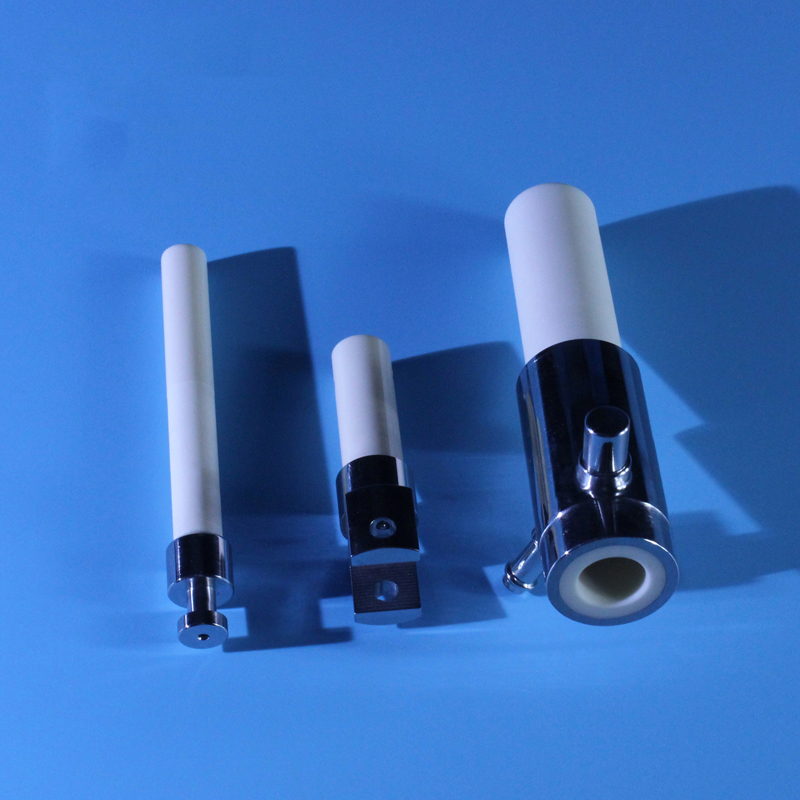Ceramics and metals are two types of materials with different properties, and there are differences in chemical and physical properties at the interface when they are joined to each other. The connection methods of the two are different, and the characteristics of the new interface formed are also different. The range of application of mechanical connection and adhesive connection process is very limited. Although the combined use of these two processes can further increase the joint strength and obtain airtight joints, the use conditions are also limited. Once the complex load conditions, high operating temperature and reliability factors need to be considered, the only choice is the welding connection between ceramic and metal.

The main methods of welding connections are:
1. Glaze firing and sealing: silicate glass substances are sintered on ceramics in the air, and then welded to the metal in a reducing atmosphere, but the glaze layer of the joint is cracked and the internal stress is serious. This method may be phased out.
2. Sintering metal powder method: coating metal powder on the ceramic surface and sintering to form a coating, and then welding the ceramic and metal with solder, which is mostly used for ceramic-metal sealing and connection of electronic components.
3. Fusion welding: mainly laser fusion welding and electron beam welding, which can produce stable connection joints at high temperatures, but it is difficult to form surface-to-surface connections, and equipment investment is expensive.
4. Friction welding: The two weldments are rotated relative to each other and rubbed under pressure. After the metal surface is heated to a plastic state, the rotation is stopped, and a large upsetting force is applied to connect the weldments. There are both mechanical and chemical bonds at the joint. However, this method is limited to the welding of round bars, pipe fittings, etc.
5. Solid-phase pressure diffusion welding: Under the action of a higher temperature and a certain external force, the ceramic and the metal surface are brought into close contact, and the metal base material undergoes a certain plastic deformation, which facilitates the diffusion of atoms and promotes the combination of the two materials.
6. Brazing of ceramics and metals: The brazing filler metal between the ceramics and the metal base material is melted at high temperature, and the active components in it chemically react with the ceramics to form a stable reaction gradient layer and combine the two materials together.
7. Self-propagating high-temperature synthesis (SHS Self-propagating High-temperature Synthesis) welding: high-energy solder is preset between the ceramic and metal interface, and the solder is ignited to generate a short-term high-temperature combustion wave, so that the solder and ceramic and metal interface are rapidly fused, and Joints are formed upon cooling. This method has high efficiency and low energy consumption, and is of great significance in the manufacture of metal-ceramic matrix composites. The performance, process characteristics, mechanism and process cost of the welded joints formed by the above-mentioned various methods are comprehensively considered. We believe that solid-phase pressure diffusion welding, brazing and SHS welding have a certain pre-research basis and good application prospects, and should focus on research and development.
The connection theory of ceramics and metals and related process research are very important for the development of ceramic and metal composite components, especially high-temperature structural composite materials, and have potential economic and social benefits for the energy and power industries in the next century. The current research is almost all carried out around the bonding mechanism of the ceramic and metal interface, the solution of the interface stress, the connection process and so on. Comprehensive consideration of connection theory, technology and other aspects. Huamin Ceramics believes that active metal brazing and SHS welding technology are most promising to become the key development research projects in the ceramic and metal joining process.
